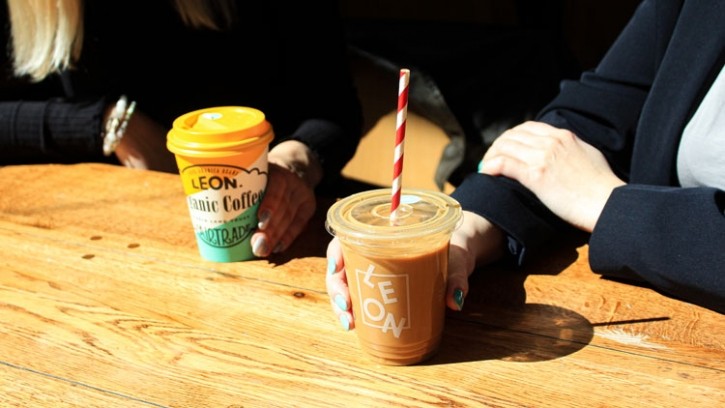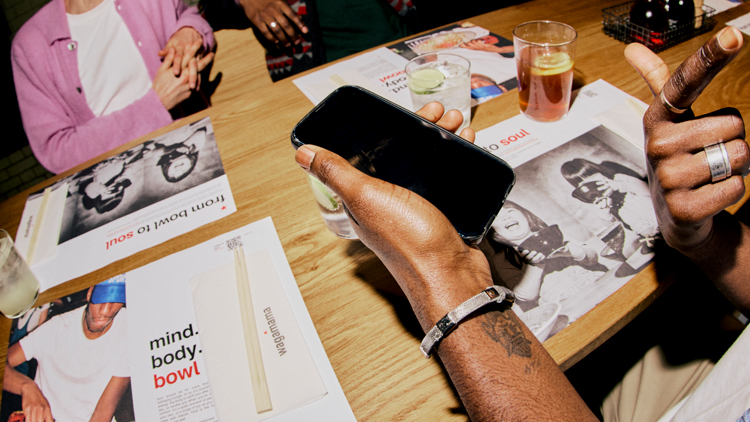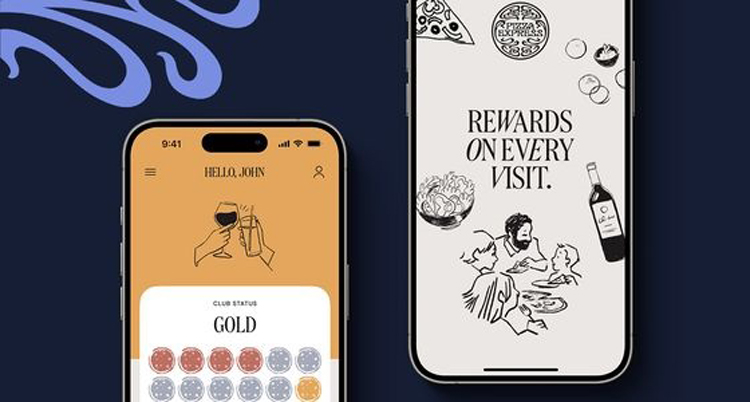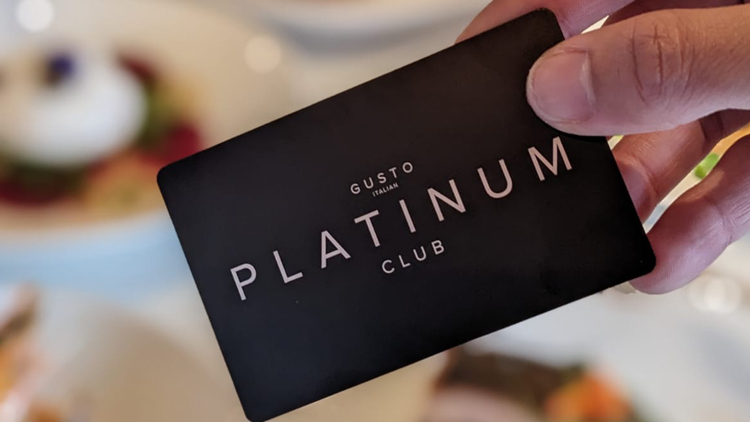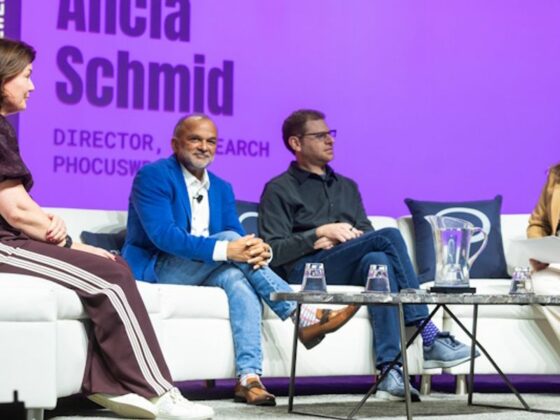When it launched back in September 2020, Pret’s subscription-based membership programme felt like a true disrupter. For just £20 per month, the original YourPret Barista scheme entitled users to five ‘barista prepared’ drinks every day. Designed specifically to win back customers after the Covid lockdown, Pret chief executive Pano Christou said at the time that he had expected only around 3,000 sign ups on the first day. In the end, he got more than 16,000.
By the end of 2020, YourPret Barista had more than 150,000 subscribers. In 2022, when the group reported its first profit since 2018, the subscription was directly credited. The scheme has since changed, rebranding to Club Pret with the price eventually rising to £30 per month and users being given a 20% discount on food but the success continued.
So, when Pret suddenly revealed last month that it would be scrapping the scheme and replacing it with a more traditional discount model, albeit one that retains a subscription element, it came as something of a shock. From next month, Club Pret will instead offer users a 50% discount on up to five barista-made drinks per day for £5 per month until 31 March 2025 when it will rise to £10 per month.
The reason for the change, according to the company, was that the subscription was only relevant to a small number of Pret customers, thus alienating a large proportion of its customer base. Instead, Pret is switching to a ‘better value for everyone’ model with discounts available to everyone being introduced across several products.
So why the change of heart? Pret had faced a number of issues with its subscription model in the months leading up to the announcement of the change. In March it introduced a crackdown on account sharing by making users log into the Club Pret app to claim their free drink, rather than just use a QR code as they had done before.
There had also been suggestions that the Club Pret scheme was too generous. Data correlated by Dojo found that the scheme, if used to its limit every day, could save customers a not insignificant £577.50 a month. As UK Pret MD Clare Clough admitted, it was an offer that almost seemed ‘too good to be true’.
A ripple effect
Despite Pret’s change of heart, its subscription model has sent ripples across the sector, and has encouraged other brands to take a similar approach. One such one is rival high street chain Leon, which launched its own Roast Rewards scheme earlier this year. Billed as the UK’s cheapest high street coffee subscription, Roast Rewards costs £25 per month and entitles subscribers to five barista-made drinks a day along with a 20% discount on its breakfast and all-day food menu – excluding meal deals.
While the parallels with the Club Pret scheme are obvious, Mariam French, marketing director at Leon, says Roast Rewards was designed to ‘establish Leon as a household name in the coffee game’ – the group’s 150-strong estate being notably smaller than Pret, which has over 250 sites in London alone
Learnings have been taken from Pret’s model and French says that “significant effort has gone into creating a model that would be economically beneficial for both Leon and our customers”. This includes implementing a redemption time limit is, meaning users must wait an hour between claiming each of their five drinks.
While French won’t be drawn on the exact number of subscribers Roast Rewards has, she says the scheme continues to ‘grow every week’. As to its future, there’s no suggestion that Leon plans on following Pret’s decision to scrap it anytime soon given it no longer has to compete with it. “We’re always keen to hear feedback about how we can ensure Roast Rewards is as good as it can be for our guests,” she says. “We have scheduled meetings with our developers to regularly review the service and see how we can further improve.”
Going platinum
It’s not just in the grab-and-go market where Pret’s subscription scheme has had an influence. In March this year, Northern-based Italian restaurant operator Gusto became the UK’s first casual dining brand to launch a subscription-based membership programme. Called the Gusto Platinum Club, for £65 per year or £6 monthly members get 40% off food Sunday to Thursday for themselves and up to three guests. They also receive a free bottle of prosecco on sign up and exclusive invites to menu launches.
“We took inspiration from Pret’s subscription model,” explains Kat Schofield, head of marketing at Gusto. “We tailored it to our KPIs and ran various focus groups with guests to establish where the pinch points were in terms of the level of discount expected, and the cost of subscription. And we pulled that together to create the scheme we have now.”
Within its first week, Gusto had more than 1,000 diners sign up to the Platinum Club scheme, despite only being available across Gusto’s six ‘neighbourhood’ restaurants, which are primarily based in its Northwest heartland. The group’s city centre sites, of which there are eight, are excluded from the offer.
“While loyalty schemes are not the main factor determining whether customers keep returning to a venue,
they remain a key part of the marketing mix”
“The key objective for us was to drive frequency of visit in our neighbourhood restaurants,” adds Schofield. “We knew that if we were going to be putting those discounts in place then our frequency would have to at least double with guests that signed up, if not ideally triple.”
As well as boosting the regularity of diner visits, Schofield notes other benefits to the business including a rise in drink spend among Platinum Club members. “The mentality is that people are spending less on food, so they feel more comfortable having a cocktail as well as a glass of wine,” she continues.
“We’re not known for regularly offering huge discounts. We’ve always been really precious about it, which is why I think [the scheme] was so well received.”
A ‘key part’ of the marketing mix
While loyalty schemes have long been a fixture of the retail sector, it’s only in recent years that there has been a similar proliferation across the restaurant space, specifically in the casual dining and QSR arena. This is, in part, down to the sector’s growing embrace of digital apps as tools for driving customer engagement, with loyalty schemes giving operators a key opportunity to directly personalise the guest experience by drawing on the customer data provided.
However, it is primarily reflective of the growing pressure on businesses to entice diners to make repeat visits back amid the ongoing cost of living crisis.
Research from Zonal’s most recent GO Technology report shows that over half (58%) of consumers believe restaurant loyalty schemes represent good value for money, and nearly half (47%) have joined a loyalty scheme to save money since the cost-of-living crisis. “While loyalty schemes are not the main factor determining whether customers keep returning to a venue, they remain a key part of the marketing mix,” says Tim Chapman, chief commercial officer at Zonal.
Many of the loyalty schemes offered by restaurants take the form of an app and follow a traditional discount model, whereby returning custom is rewarded by points or stamps that eventually unlock free menu items. Examples of this include Tortilla’s recently-launched The Burrito Society; Nando’s long-running Nando’s Rewards; Wagamama’s Soul Club, which takes its inspiration from the Japanese tradition of hanko stamps; and the My McDonald’s scheme, where users earn points for every penny spent.
Some restaurants have taken this model further by also including a tiered element so the most loyal customers can earn bigger rewards. Launched last year, The Ivy’s Premier Rewards scheme is one example. The entry-level green membership allows guests to earn points equivalent to 5% of the total spend, as well as double points and a ‘sweet surprise’ on or near their birthday. Those who visit at least 10 times a year, however, are automatically upgraded to gold status, which comes with additional benefits including a pass for two to The Ivy Club and access to priority reservation services.
Wagamama’s Soul Club has also harnessed a tiered approach. Diners who visit Wagamama four times within the space of a year progress from the rudimentary level 1 to level 2, with a further four visits promoting them to level 3. Each time a user levels up they earn access to more rewards including exclusive brand experiences, and the opportunity to win premium monthly merch drops.
“Most loyalty schemes work by giving customers points per purchase which can then be traded for rewards,” says Kay Bartlett, Wagamama chief marketing officer, speaking to MCA, Restaurant’s sister site. “We wanted to amplify our programme with a proposition that delivers beyond this simple value exchange, satisfying our guests’ emotional and functional needs.”
Loyalty pioneers
Pizza Express was arguably the pioneer of the tier-based loyalty scheme, at least within the realms of the UK restaurant industry. Launched back in December 2021, the Pizza Express Club app allows users to progress through bronze, silver and gold tiers by collecting stamps, with each level offering users greater rewards. While bronze members are entitled to a free starter or side, those who progress to gold status – achieved by earning 12 stamps within a calendar year – have access to benefits including free dough balls, complimentary soft drinks, and a free kids meals every time they visit. According to the group, gold members save up to 50% on the average family meal.
As an incentive to encourage people to join the scheme in the first place, every new user is also given a voucher for a free portion of dough balls. “We pivoted away from traditional ‘deep discount’ mobile app models and instead opted to deliver greater value through free rewards ‘every time you dine’,” says Arslan Sharif, digital and loyalty director at PizzaExpress. “This broke conventional loyalty scheme norms, delivering instant gratification every time customers dined using the digitally-enabled app.”
Sharif’s remit when developing the app was to create a synchronised loyalty proposition that linked both the physical and digital. Utilising the company’s omnichannel presence, stamps can be collected not only by restaurant visits, but also through delivery orders (which can be made through the app) and through purchases of the group’s ready-made pizzas available in supermarkets across the country.
“In practice, if a member purchases an American Hot on the supermarket aisle, for example, they simply scan the internal QR code and the stamps will sync to their account automatically,” he continues. “We were the first to pioneer this model in casual dining, and we continue to lead the industry this way.”
“The future of digital experiences in the hospitality sector is promising”
So far, the scheme has proven incredibly successful. Since the app launched, more than two million people have joined the Pizza Express Club, and of those more than 150,000 have signed up after being referred by an existing friend or family member.
“The future of digital experiences in the hospitality sector is promising, and we like to see ourselves as trendsetters in the area,” adds Sharif.
“The Pizza Express digital offering has gone from strength to strength, proving a true asset from both the company and the customer’s perspectives, and we are confident that it will continue to deliver and improve over time.”
Next steps
Given the broad spectrum of options available to restaurants, when it comes to the question of developing a loyalty proposition that benefits both a business and its customers, there isn’t a one size fits all approach. There are crucial elements to consider, though.
Ensuring the offer is generous while not appearing to be excessive is important, as is putting measures in place that ensure your loyalty scheme cannot be abused by its users. Schofield notes that Pret’s need to crackdown on account sharing among Club Pret members had a direct impact on the development of Gusto’s Platinum Club.
“With Pret we saw the subscription being exploited by some users, and when they tried to stop that it led to a backlash,” she says. “That was a learning for us in ensuring our scheme isn’t abused.”
As such, all Platinum members have cards with their name on that they must present in order to get receive the benefits of the scheme.
September will mark six months since Gusto launched its Platinum Club, and with that milestone drawing near, Schofield’s thoughts are turning to its future, including rolling something similar out to its city restaurants, although “it wouldn’t be exactly the same mechanics,” she says.
Options include making the discount only available midweek at those busier restaurants and trialling new menus with two price points to be explicit about the Platinum Club benefits.
Whether the subscription model takes off in any meaningful way in the restaurant sector remains to be seen, with Pret’s trailblazing approach either regarded as inspirational or a cautionary tale. Gusto is unequivocal in its appraisal of the approach.
“It’s really changed the growth trajectory of those six North West restaurants in terms of frequency and spend,” says Schofield. “We’re really proud of it.”


